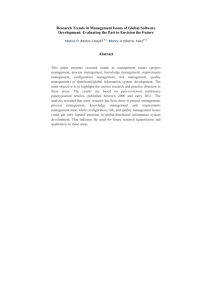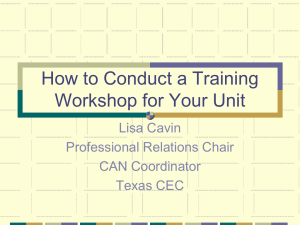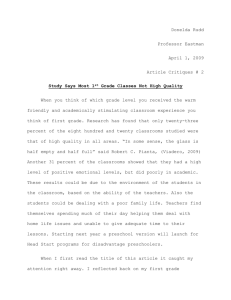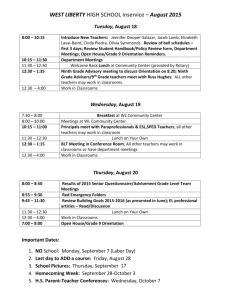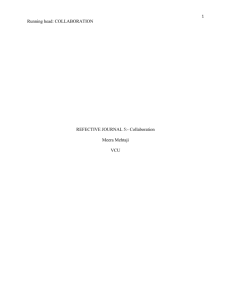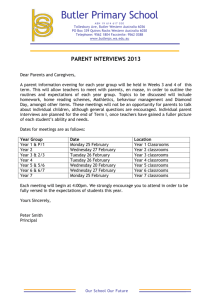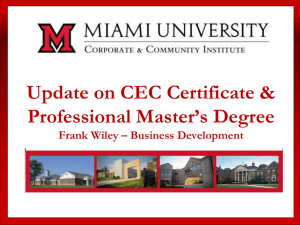A Brief Summary of The International Symposium on “Virtual
advertisement
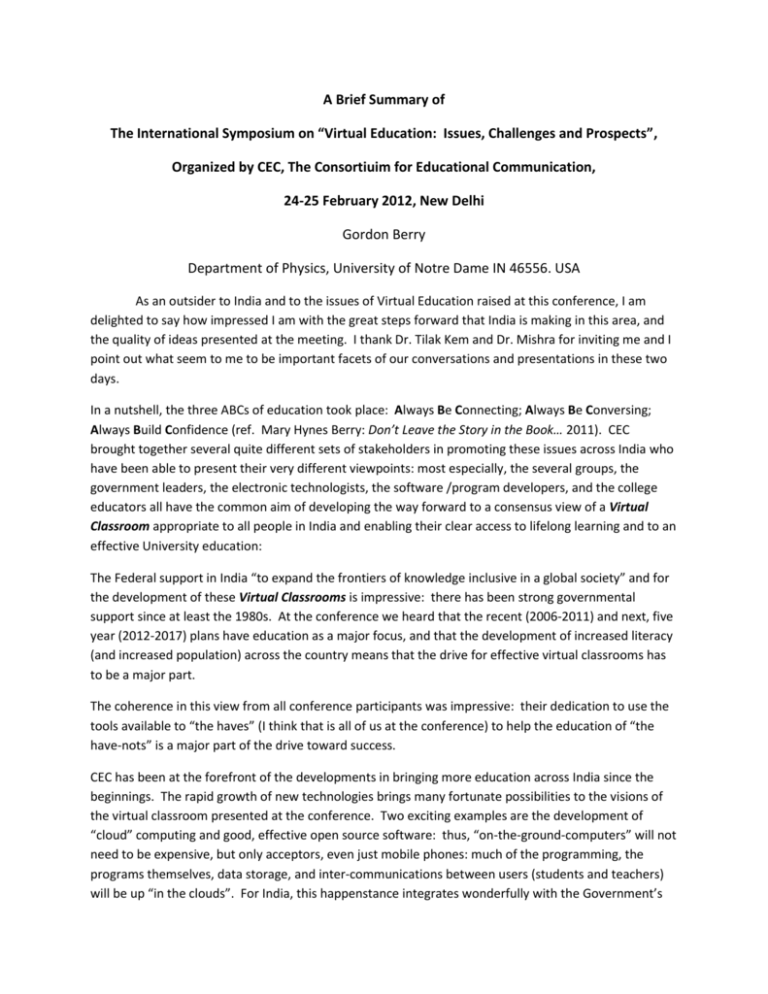
A Brief Summary of The International Symposium on “Virtual Education: Issues, Challenges and Prospects”, Organized by CEC, The Consortiuim for Educational Communication, 24-25 February 2012, New Delhi Gordon Berry Department of Physics, University of Notre Dame IN 46556. USA As an outsider to India and to the issues of Virtual Education raised at this conference, I am delighted to say how impressed I am with the great steps forward that India is making in this area, and the quality of ideas presented at the meeting. I thank Dr. Tilak Kem and Dr. Mishra for inviting me and I point out what seem to me to be important facets of our conversations and presentations in these two days. In a nutshell, the three ABCs of education took place: Always Be Connecting; Always Be Conversing; Always Build Confidence (ref. Mary Hynes Berry: Don’t Leave the Story in the Book… 2011). CEC brought together several quite different sets of stakeholders in promoting these issues across India who have been able to present their very different viewpoints: most especially, the several groups, the government leaders, the electronic technologists, the software /program developers, and the college educators all have the common aim of developing the way forward to a consensus view of a Virtual Classroom appropriate to all people in India and enabling their clear access to lifelong learning and to an effective University education: The Federal support in India “to expand the frontiers of knowledge inclusive in a global society” and for the development of these Virtual Classrooms is impressive: there has been strong governmental support since at least the 1980s. At the conference we heard that the recent (2006-2011) and next, five year (2012-2017) plans have education as a major focus, and that the development of increased literacy (and increased population) across the country means that the drive for effective virtual classrooms has to be a major part. The coherence in this view from all conference participants was impressive: their dedication to use the tools available to “the haves” (I think that is all of us at the conference) to help the education of “the have-nots” is a major part of the drive toward success. CEC has been at the forefront of the developments in bringing more education across India since the beginnings. The rapid growth of new technologies brings many fortunate possibilities to the visions of the virtual classroom presented at the conference. Two exciting examples are the development of “cloud” computing and good, effective open source software: thus, “on-the-ground-computers” will not need to be expensive, but only acceptors, even just mobile phones: much of the programming, the programs themselves, data storage, and inter-communications between users (students and teachers) will be up “in the clouds”. For India, this happenstance integrates wonderfully with the Government’s promotion of cheap computers for students. The world’s largest democracy can become the world’s most effective “learning democracy”. I noted three words for closely related concepts coming from the different areas of expertise at the conference: information, knowledge and learning; the first came from the government leaders and hardware specialists, the second from the software and program developers, and the last from the educators. Since the conference, I have been distinguishing “learning” as a noun, meaning “wisdom”, and “learning” as an adjective meaning “education” – both virtual and real. Is one of our objects the cultivation of individual “creativity” which is enhanced through individual “information, knowledge and learning”? “Blended Learning” means the integration of different types of education: the clear message coming from the educators in attendance at the meeting was the need to combine in the virtual classroom the self-student information parts with some face-to-face student-student and teacher-student interactions – these enhance learning in the standard classrooms, whereas in the virtual classroom, these can also be synchronous and asynchronous electronic interactions – there are now many forms of such interactions, and this is an area of tremendous growth as we move more into the “electronic information age”; for example, e-books, skype, teleconferencing, “blackboard” and other features (definitions of Mcomputing were described). One conference speaker discussed the wonderfully vital concept of the “comfort zone” for both student and teacher. In a normal classroom and in a virtual classroom, the students must reach the zone where they feel positively about interactions with other students as well as the teacher so that crossfertilization of ideas and concepts occurs across the whole class. In the virtual classroom, where there are likely to be a much greater number and diversity of students, this “comfort zone” can have greatly enhanced benefits multiplying the avenues to effective student learning. For example, in any conference, as in this one, a lot of “learning” is taking place during the conference breaks, as we converse, communicate and build confidence with each other. Our diverse viewpoints and ideas are propagated through the participants. Finally, we must all applaud the courage of Dr. Rajendra Mishra in putting together his definitions of the components of an effective virtual classroom as part of the development of a “Standard Quality Assurance”. This will not only enable judgement of the quality of individual virtual classroom projects, but will guide the developers (on all parts). His project is in its early defining stages, and we all owe him help in making suggestions and comments to improve his defining concepts as these virtual classrooms become more widespread and used throughout India, and beyond. His model has no national boundaries and can be used to incorporate virtual classroom concepts worldwide. We thank Dr. Tilak Kem for his leadership and the rest of the CEC group, Dr. Mishra and the many others, not only for organizing this inspiring conference, but also in continuing their national program of bringing new concepts of learning to millions of people throughout India and beyond.
